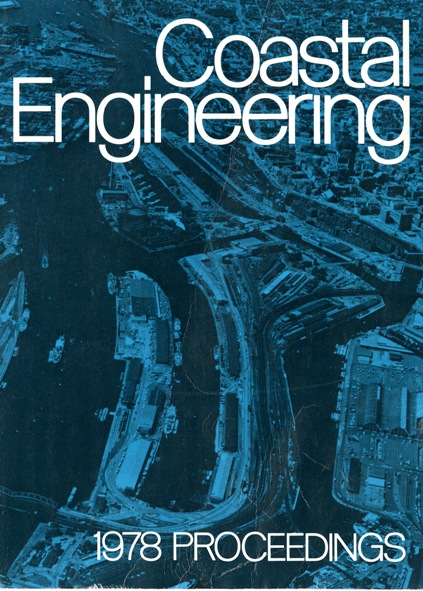Abstract
This study focuses upon four elements of breaking wave behavior: 1) Relative breaking depth criteria 2) Breaking wave classification 3) Evaluation of the plunge distance 4) Breaking wave height prediction The data set is 116 waves filmed at Virginia Beach, Va., on the Atlantic U.S. coast. The cine-photographic observation technique permitted the viewer to freeze the free surface profile at successive time steps as the waves passed an upright plane grid placed perpendicular to the beach. The results indicate that: 1) While the average value of %/d^ - 0.78, there was a significant difference between plunging and nonplunging waves. 2) Neither the breaker classification of Galvin nor that of Battjes successfully discriminated between plunging and spilling breakers. 3) The distance travelled by the foreface of a plunging wave was found to be underestimated by the free fall trajectory model advanced by Galvin. The field observations show the weakness to be in the plunge time arising from neglect of the vertical velocity component. 4) The breaking wave height prediction formulation advanced by Komar and Gaughan adequately predicts the breaking wave height within the constraints of calculating deep water wave characteristics, neglecting wave refraction and frictional effects. The combined data set covers the breaker wave height between laboratory scale observations to greater than 3 m.
Authors retain copyright and grant the Proceedings right of first publication with the work simultaneously licensed under a Creative Commons Attribution License that allows others to share the work with an acknowledgement of the work's authorship and initial publication in this Proceedings.

